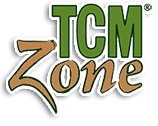Research Publications
FOR LICENSED PRACTITIONERS ONLY: RESEARCH PUBLICATIONS ON CHINESE HERBAL MEDICINE
RESEARCH PUBLICATIONS ON KAMPO HERBAL FORMULAS
Honso® formulas are clinical-proven and evidence-based. Chinese herbal formulas are regulated as pharmaceutical prescription drugs in Japan. Since the 1960's, Japanese researchers have gradually validated Kampo formulas with laboratory and clinical studies. Hundreds of research papers have been published in peer-reviewed scientific journals. Honso® product Sho-Saiko-To (Xiao Chai Hu Tang, H09) has been in clinical trials for liver health at a New York cancer hospital.
Most of the Japan's research are published using the generic names of Kampo formulas. The links below will bring up the related research on  each herbal formula from the PubMed Database by the National Library of Medicine.
each herbal formula from the PubMed Database by the National Library of Medicine.
Research publications below are linked to National Library of Medicine's (NLM) Pubmed database. Public domain information on the NLM Web pages may be freely distributed and copied. We acknowledge the important research information for healthcare practitioners usage.
| # | Japanese Name | Chinese Name | PubMed Link |
| H07 | Hachimi-jio-gan | Bai Wei Di Huang Wan | Click Here |
| H08 | Dai-saiko-to | Da Chai Hu Tang | Click Here |
| H09 | Sho-saiko-to | Xiao Chai Hu Tang | Click Here |
| H12 | Saiko-ka-ryukotsu-borei-to | Chai Hu Jia Long Gu Mu Li Tang | Click Here |
| H13 | Sanou-shashin-to | San Huang Xie Xin Tang | Click Here |
| H14 | Hange-shashin-to | Ban Xia Xie Xin Tang | Click Here |
| H15 | Oren-gedoku-to | Huang Lian Jie Du Tang | Click Here |
| H16 | Hange-kokuboku-to | Ban Xia Hou Po Tang | Click Here |
| H20 | Boi-ogi-to | Fang Ji Huang Qi Tang | Click Here |
| H23 | Toki-shakuyaku-san | Dang Gui Shao Yao San | Click Here |
| H24 | Kami-shoyo-san | Jia Wei Xiao Yao San | Click Here |
| H25 | Keishi-bukuryo-gan | Gui zhi fu ling wan | Click Here |
| H40 | Chorei-to | Zhu Ling Tang | Click Here |
| H41 | Hochu-ekki-to | Bu Zhong Yi Qi Tang | Click Here |
| H43 | Rikkunshi-to | Liu Jun Zi Tang | Click Here |
| H45 | Keishi-to | Gui Zhi Tang | Click Here |
| H48 | Juzen-taiho-to | Shi Quan Da Bu Tang | Click Here |
| H60 | Keishika-shakuyaku-to | Gui Pi Jia Shao Yao Tang | Click Here |
| H68 | Shakuyaku-kanzo-to | Shao Yao Gan Cao Tang | Click Here |
| H71 | Shimotsu-to | Si Wu Tang | Click Here |
*The information provided here is for healthcare professional practitioners only. These statements have not been evaluated by the Food and Drug Administration. These products are not intended to diagnose, treat, cure or prevent any disease.

